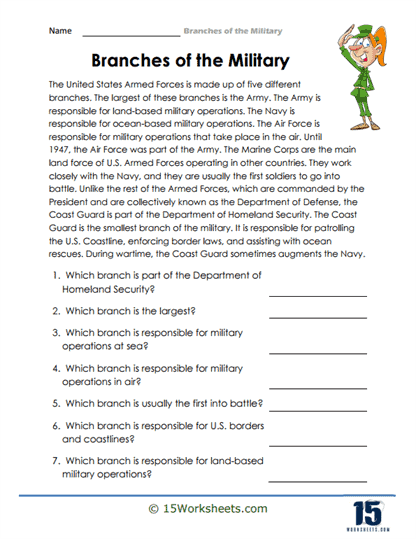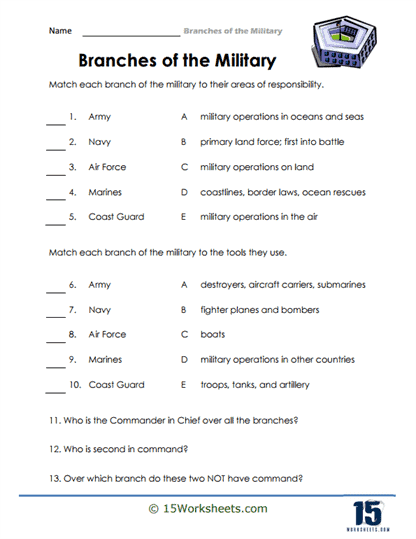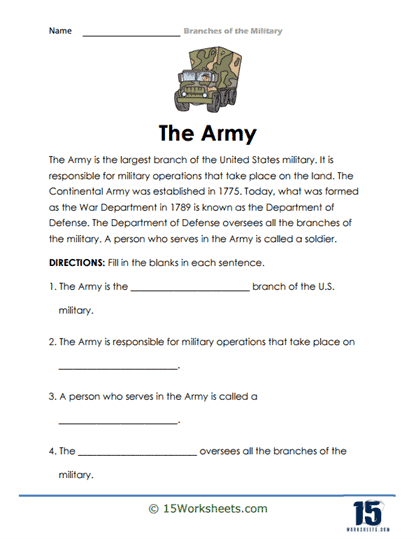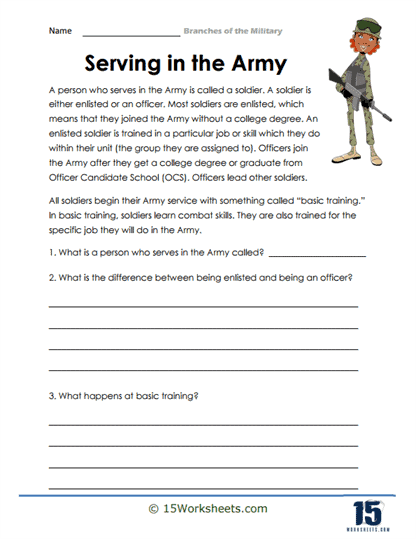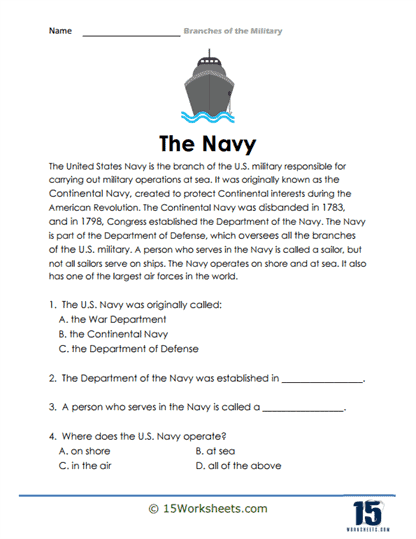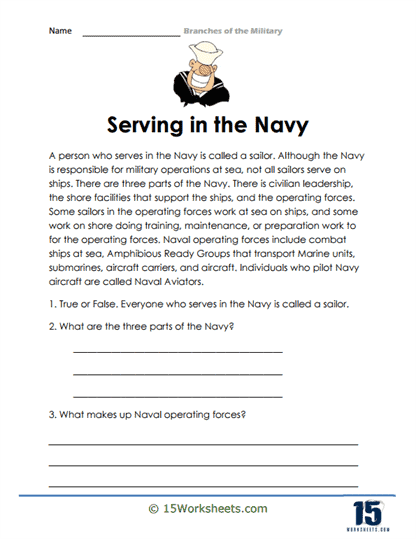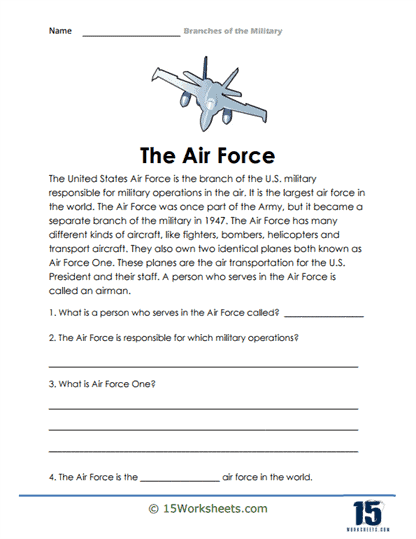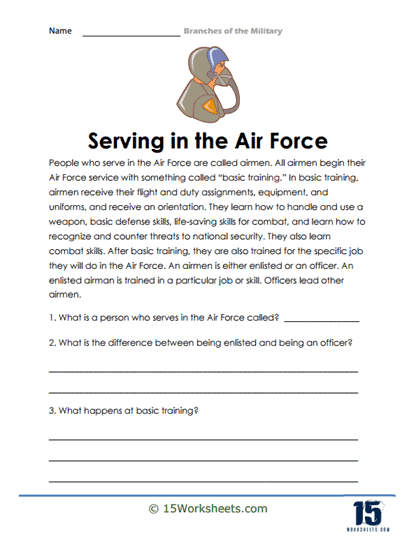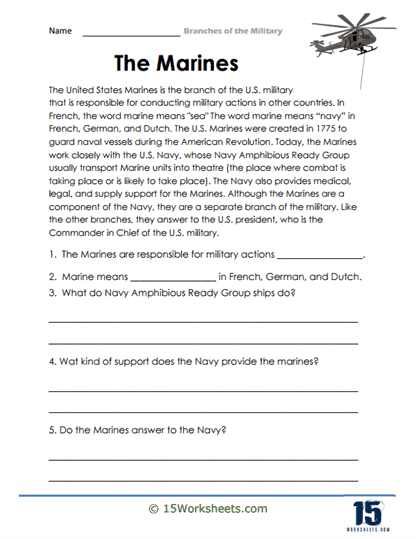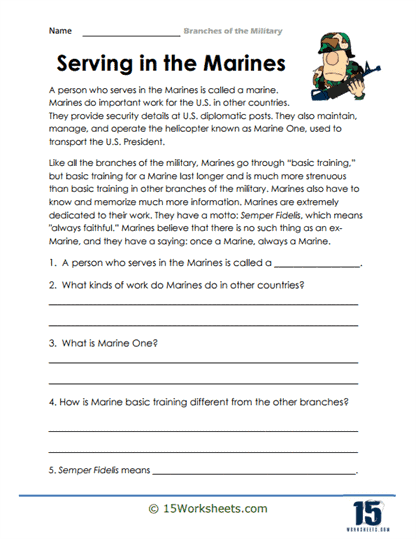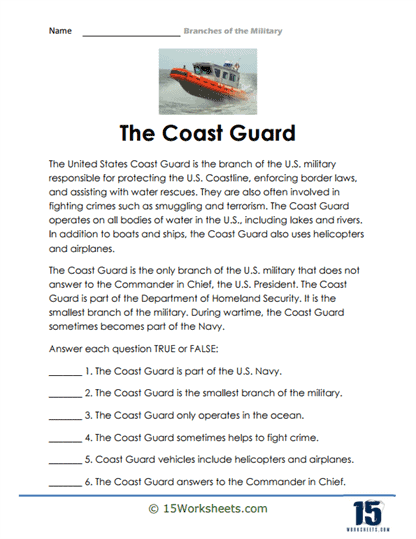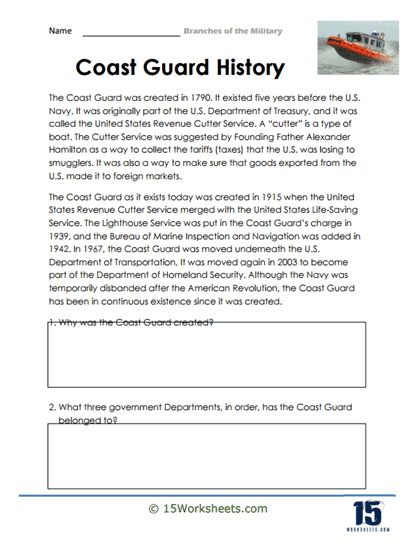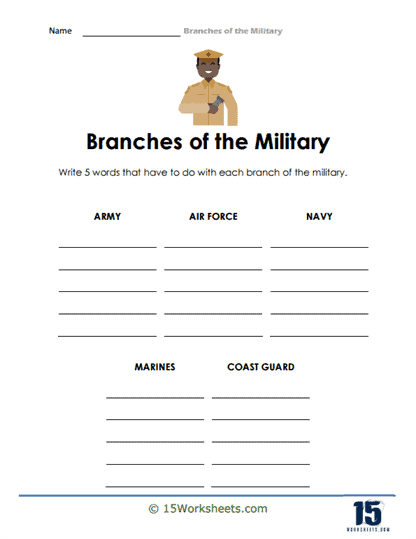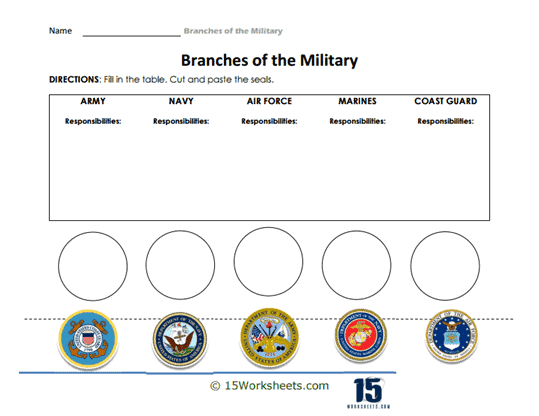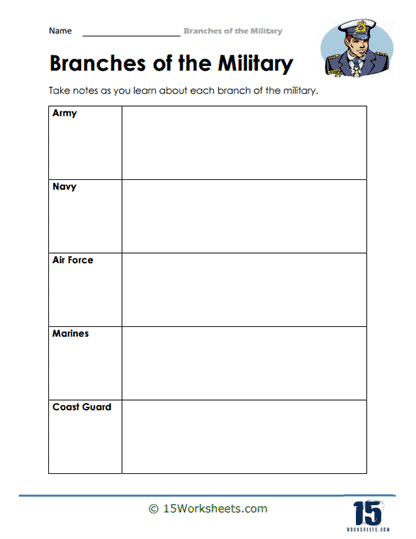Branches of the Military Worksheets
All About These 15 Worksheets
Students embark on an informative exploration of the branches of the United States military with this comprehensive series of 15 worksheets. This collection is designed to introduce students to the different branches of the military, their roles, and their contributions to national defense. Through engaging activities and thought-provoking exercises, students will gain a deeper understanding of the distinct missions, organizational structures, and unique features of each branch. Through these worksheets, students will:
- Explore the overall purpose of the military, the role of each branch, and the significance of their collective efforts in protecting the nation;
- Learn about the United States Army, Navy, Air Force, and Coast Guard the and their primary responsibilities in defending the country;
- Thoroughly read and comprehend various passages detailing some key facts of each military branch and their responsibilities;
- And effectively take notes as they learn about each military branch, learning to synthesize the information they hear or read about.
Engaging with this series of worksheets will provide students with a comprehensive understanding of the branches of the United States military. Through engaging activities and thought-provoking exercises, students will develop knowledge of each branch’s mission, organizational structure, and unique contributions to national defense. Overall, this series aims to foster a sense of appreciation for the men and women who serve in the military, their commitment to protecting the nation, and the importance of a strong and capable defense force.
What Are the Land, Air, and Sea Defenses of the USA?
A country’s military defenses are essential to ensuring its citizens are protected against invasion. While you may know that the United States boasts the highest defense budget in the world, you may not be as familiar with what the country’s land, sea, and air defenses actually entail.
The land, air, and sea defenses of the United States include four branches of the United States military (Army, Navy, Marine Corps, and Air Force) and their respective equipment. They also include the United States’ national missile defense system and air defense systems.
Understanding the United States Armed Forces
The US Armed Forces includes six distinct branches:
- Air Force
- Navy
- Marine Corps
- Army
- Coast Guard
- Space Force
The Space Force focuses on space-based capabilities and operations related to the space domain.
The U.S. Army is the land-based arm of the armed forces. Aside from a size of approximately 500,000 personnel, it also operates a range of weaponry and vehicles, including:
- Artillery
- Machine guns and sniper rifles
- Anti-tank weaponry
- Rocket launchers
- Air defense systems
- Multipurpose wheeled vehicles
- Tanks and infantry fighting vehicles
- Armored personnel carriers
- Aircraft, including fixed-wing aircraft, helicopters, and unmanned aerial vehicles (UAVs)
- The United States Navy and Marine Forces are maritime service branches. The Marine Forces function as maritime land forces or marine infantry. Equipment operated by these branches includes:
- Amphibious landing vehicles
- Armored personnel carriers
- Artillery and rocket launcher
- Fixed-wing aircraft, helicopters, and UAVs
- Aircraft carriers (the Navy operates 11 at the moment – the most in the world)
- Amphibious assault ships
- Cruisers
- Destroyers
- Small boats
- Submarines, including both ballistic and guided missile submarines and attack submarines
The U.S. Navy operates a wide range of aircraft. Its aircraft constitute the second-largest air force in the world — second only to the United States Air Force.
The Coast Guard patrols the U.S. coastline and protects trade routes and access to the American mainland. In peacetime, it functions under the Department of Homeland Security but can be transferred to the Department of the Navy during wartime.
The United States Air Force is the biggest in the world. It operates over 5000 aircraft, including weather reconnaissance aircraft for studying meteorological phenomena. It also operates over 400 intercontinental ballistic missiles.
Understanding the United States National Missile Defense System and Air Defense Systems
The primary air defense system operated by the United States military consists of the Patriot surface-to-air missile system. It also acts as the U.S. military’s anti-ballistic missile system. These systems are tasked with countering ballistic missiles aimed at the United States by enemy nations.
U.S. air defenses also include radar systems and FIM-92 Stingers. Stingers are portable surface-to-air missiles used by individual service members to attack aircraft from the ground.
The U.S. national missile defense system is designed to protect the country against incoming missiles, including all types of ballistic missiles. The current system includes:
- Ground-Based Midcourse Defense, which is designed to counter and destroy ballistic missiles in space.
- Aegis Ballistic Missile Defense System, which is a land- and ship-based based system. It’s meant to counter short to intermediate-range ballistic missiles.
- Terminal High Altitude Area Defense, which is designed to intercept short to intermediate-range ballistic missiles.
The military is also exploring numerous other additions to the missile defense system, including airborne options.

